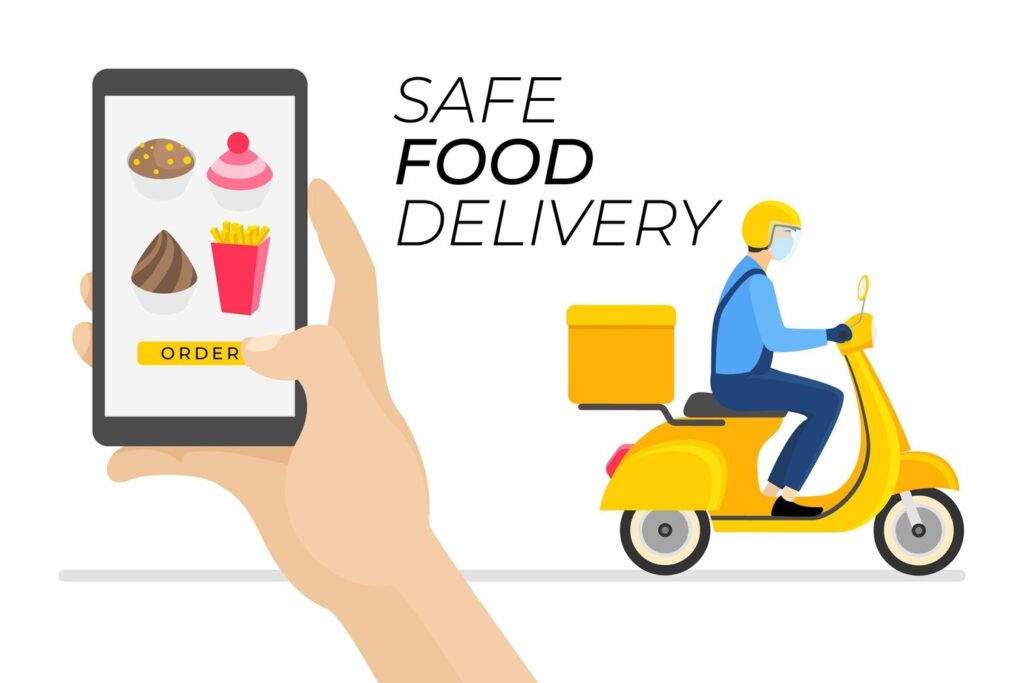Do you want your new food delivery firm to get off to a good start? However, achieving this is not always simple because there may be many obstacles. You must organize food menus and services, examine market conditions, and operational costs, and even develop marketing tactics.
You must use technology to remain ahead of the competition and offer a better consumer experience. We will go over important details on how to launch a food delivery service from the beginning in order to give you the best possible start.
Starting a food delivery business in 5 easy stages. How can a home-based meal delivery service be launched? To get started, follow these five steps:
1. Creating a business plan and budget
(Image Credit-Google)
Creating a grocery delivery business plan and securing funding are the two biggest steps to getting the business off the ground. When creating your business plan, you should consider your target customer base, initial and ongoing costs, and time to profit. This is also a great time to choose a business name and develop your initial marketing plan. Your investment should include:
Workspace: The cost of locating your business varies greatly by location. Many entrepreneurs are starting their businesses from home to cut initial costs.
Tech cost: Most small businesses need computers, phone systems, Internet access, and possibly printers or scanners. You can use your personal devices at first but plan to invest in technology after the initial start-up costs.
Business license and insurance: It is essential that your business is properly covered. Most small businesses need liability insurance, and as a food delivery business, you need commercial auto insurance. Most states require workers’ compensation insurance as soon as you hire an employee.
Marketing materials and website: You need to advertise your business to attract customers at your local restaurants and those you want to serve with your food delivery. Start building your social media presence and a simple, engaging website. It’s also a good idea to hand out flyers to restaurants and neighbors’ homes. Consider offering discounted rates to new restaurant partners and customers to increase awareness.
2. Examine your intended market
Any firm has a greater chance of success if it understands its audience. Look at the neighborhood where your firm will be located. Are there any universities or business districts nearby, or are there suburban homes? Your company name, your marketing plan, and the types of meals you offer can all be influenced by the demographics of your target market.
To find out where there might be a demand in your neighborhood, you can do some research with regional business associations. You can also carry out research by visiting the neighborhood and finding out what the residents need.
3. Make a decision regarding your service offerings
Include menu design in your business plan after determining your target market. Choose your menu, paying particular attention to your hallmark dish. Think about having some simple items on your menu as well.
One of the finest suggestions is to choose delivery-friendly menus that can accommodate all of your target consumers, including busy working parents, seniors, people with disabilities, people attending business meetings, and people who detest going out to eat or shop. Even a food menu with quick meals, simple snacks, lunch, and supper options for college students is possible.
First, you should analyze and consult local restaurants and other food businesses to see what services they offer. Here’s an overview of the missing services and an overview of the services your company can include. Take a look at delivery trends in the hospitality industry. It will give you some great ideas.
If you plan to have a restaurant partner, approach it strategically with market research and a business plan.
4. Plan your menu and delivery options
You can start planning your menu and service offerings once you have a clear understanding of your target market. Whether you are collaborating with a meal-prep service or neighborhood eateries will affect how this is different.
A clear theme will help you as you launch your delivery service. Will you concentrate on quick meals, easy snacks, lunch, dinner, or meals for families or singles?
If you want to ensure that your customers have appealing options, consider forming a variety of partnerships with local restaurants.
5. Use both offline and online channels to market your company
(Image Credit-Google)
You are now prepared to launch your food delivery company and offer your services globally online. Getting online is one of the most amazing things you can do for your business’s advertising.
Digital marketing is now the medium through which you can promote your company in a variety of ways, including through brand awareness, leads, search traffic and exposure, social media accounts, and sales. Additionally, it enables you to develop a personal relationship with your audience, which could promote brand loyalty.
6. Publish a business website that looks professional
Utilizing your company website and sharing information about your business on Facebook and Instagram will help you with search engine optimization (SEO), which will bring in more customers.
By using word-of-mouth marketing, you can share information about your services with your friends, and neighbors, and even through door-to-door solicitation.
Using expertly designed business cards, flyers, signs, or newspaper ads.
These are the typical steps you must take to launch your food delivery business from scratch.



